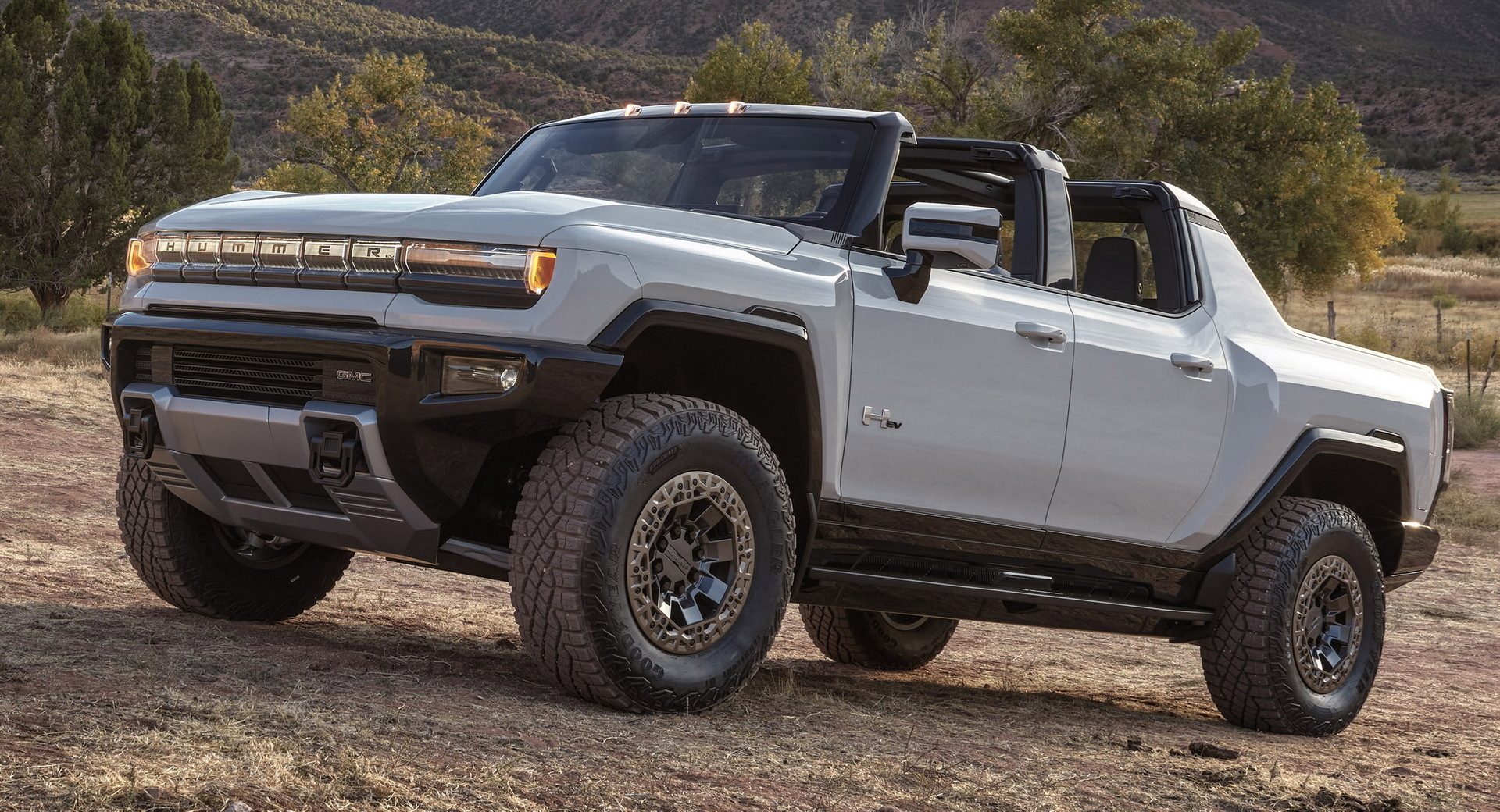The original gas-powered Hummers were always known to guzzle fuel, and a new study has found that the new GMC Hummer EV might unfortunately share its ICE predecessors’ inefficiency.
The study found that in terms of upstream emissions, that is the emissions created from generating the electricity to power an EV, the Hummer produced 341 grams of CO2 per mile. That’s 106 and 112 more grams per mile respectively than the Ford F-150 Lightning and Rivian R1T, two of the truck’s closest competitors. Additionally, the electric Hummer was found to produce more CO2 per mile than even a gas-powered Toyota Corolla, which emits 269 grams per mile, as well as the slightly less fuel-sipping Chevy Malibu, which comes out to 320 grams per mile.
Read More: Classic Cars Less Harmful To The Environment Than EVs, Study Finds
This largely comes down to the Hummer’s gargantuan 9,063 lb (4,111 kg) curb weight and boxy, un-aerodynamic shape. Because of those two things, the drivetrain not only needs to work harder to overcome its sheer mass, but also to cut through the air.
However, it’s worth noting that these CO2 emissions numbers differ based on geography for EVs since the type of energy used to produce the electricity varies, and the original source for that 341 figure shows it as the global average. By comparison, in the EU, where there’s been an increasingly wider adoption of sustainable energy sources in recent years, the number is only 166 grams per mile. Even in the US, a country often thought to be a bit behind the times when it comes to sustainability, the number is only 276, which is still less than both of the sedans mentioned above.
Not only that, but these “electricity-guzzling” trucks are still more climate friendly than their ICE counterparts, with even the wildly inefficient Hummer EV producing 103 fewer grams of CO2 per mile than the average gas-powered Ford F-150 on the global scale, so there’s still some merit to continue the development of electric trucks.
See Also: New Data Confirms That Demand For EVs Is Increasing Dramatically
Given that, it seems the best solution for the EV industry overall would be to place more of a focus on creating lighter vehicles with efficient aerodynamics and drivetrains, as well as using more environmentally friendly energy sources at the power plants that produce their electricity.
By creating more efficient EVs, less electricity is used to achieve the same performance, which in turn creates less upstream emissions. Additionally, a more efficient EV wouldn’t need as large of a battery, which would also reduce the amount of pollution created in mining the precious metals used in its construction. Combine that with a wider adoption of sustainable and/or renewable energy sources at power plants, and you’re looking at even less upstream emissions overall since they’d be getting cut back right at the source.





